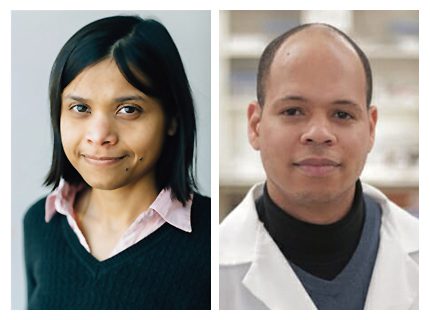17 Oct Improved understanding of early spinal cord development paves the way for new treatments

Sushmita Roy, Randolph Ashton
Researchers at the University of Wisconsin–Madison are developing the means to turn stem cells into a wide range of specific types of spinal cord neurons and cells in the hindbrain — the critical nexus between the spinal cord and the brain — paving the way for improved prevention and treatment of spinal cord disease.
In a new study published in Science Advances, scientists from UW–Madison’s Stem Cell & Regenerative Medicine Center describe a new protocol for differentiating human pluripotent stem cells into nearly the full spectrum of neuronal cell types that arise during early hindbrain and spinal cord development — important, because neuronal cells have so many different, specialized jobs within the body. The study also uses new bioinformatic analyses to capture previously unknown information about their development in humans.
“The ability to study human hindbrain development so early is of high significance because many developmental disorders manifest themselves through disruptions in the developmental program very early,” says Sushmita Roy, UW–Madison professor of Biostatistics and Medical Informatics, faculty at the Wisconsin Institute for Discovery and co-author of the study with biomedical engineering professor Randolph Ashton, scientist Junha Shin and Nisha Iyer, a former postdoc in the Ashton lab now at Tufts University.
“This is something that we, as scientists, really haven’t had good access to before, but stem cells are allowing us to start exploring this” says Ashton, associate director of the SCRMC, also faculty at WID, and CEO and co-founder of Neurosetta, LLC. “With this paper we can start to fill in those gaps of understanding of how human development occurs in the hindbrain and spinal cord and provide a really nice tool that essentially can lead to a very standardized and scalable protocol to manufacturing regenerative cell transplants.”



